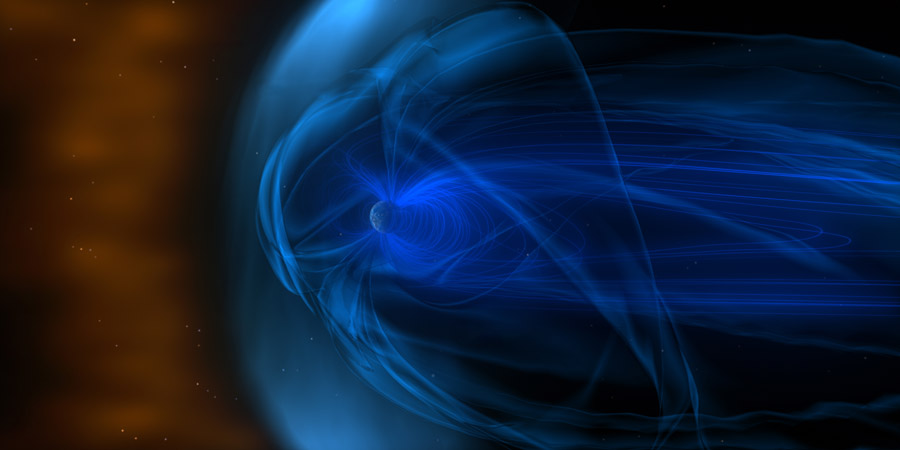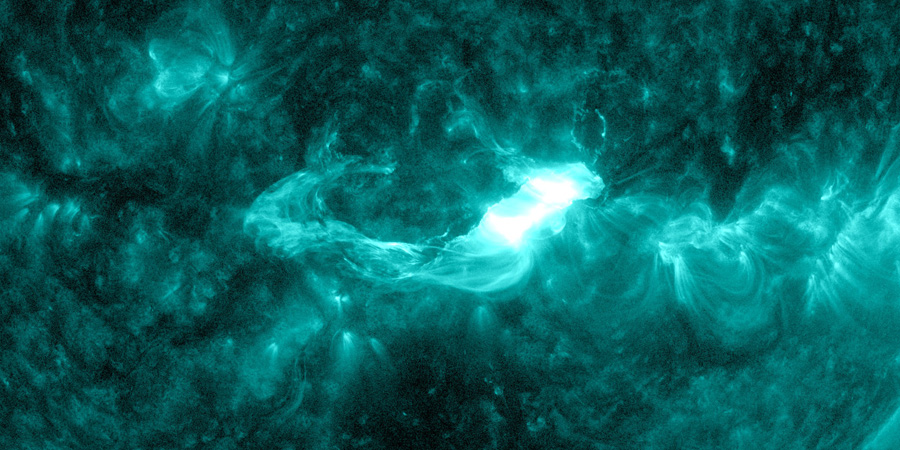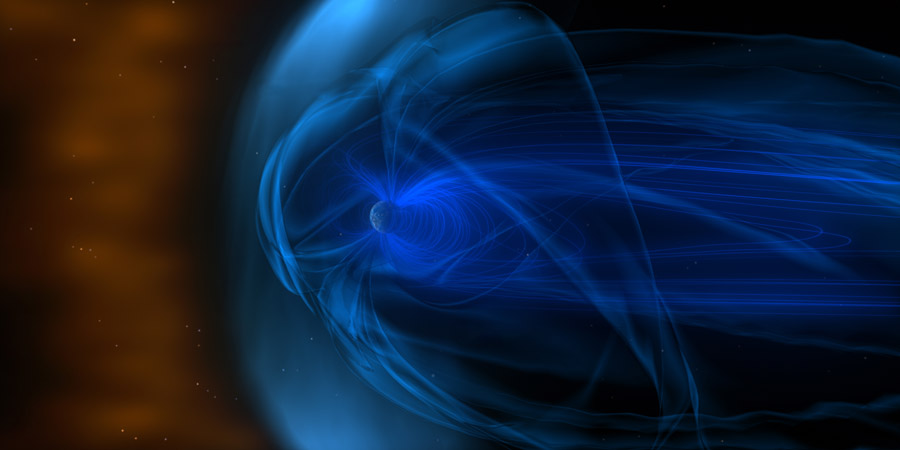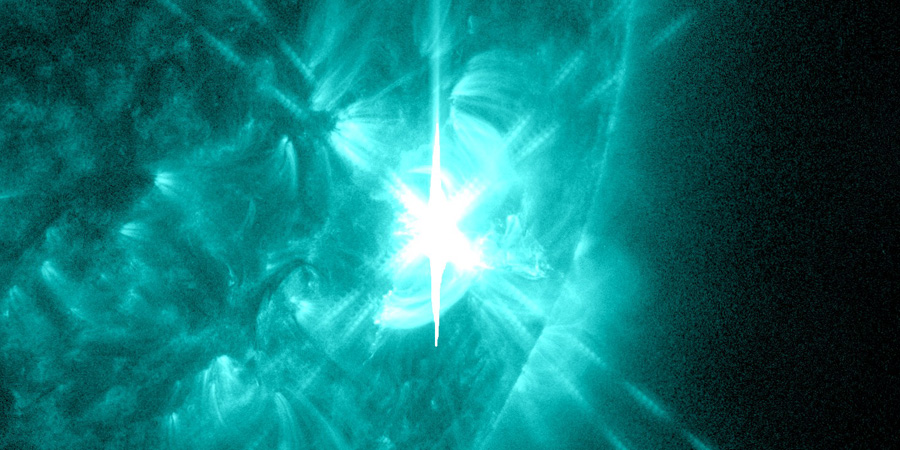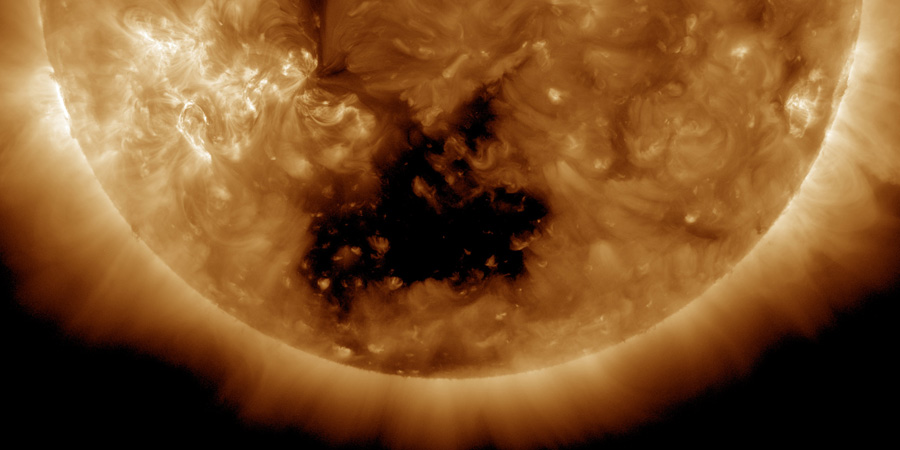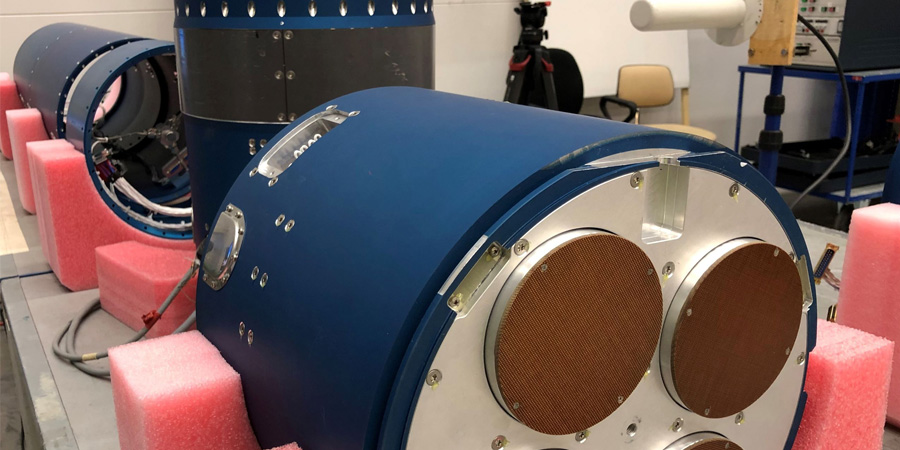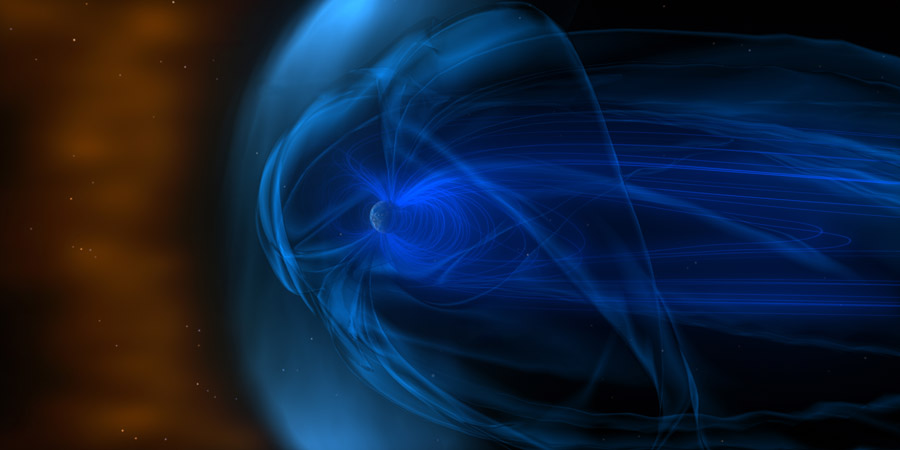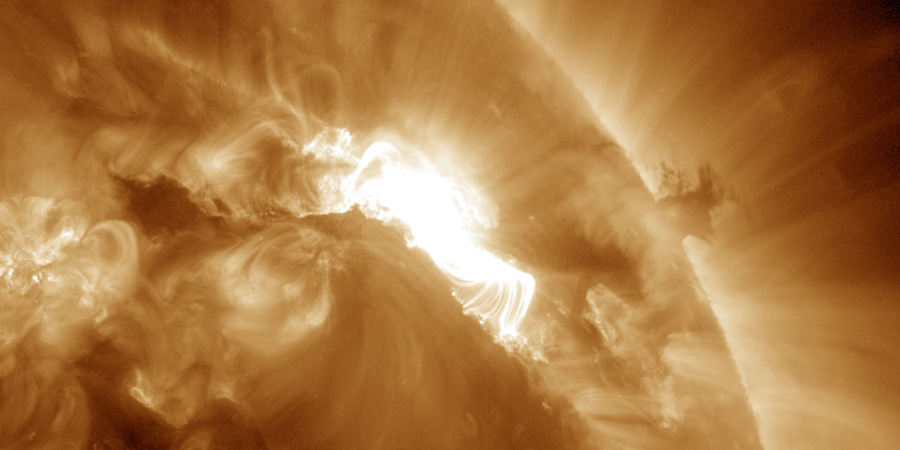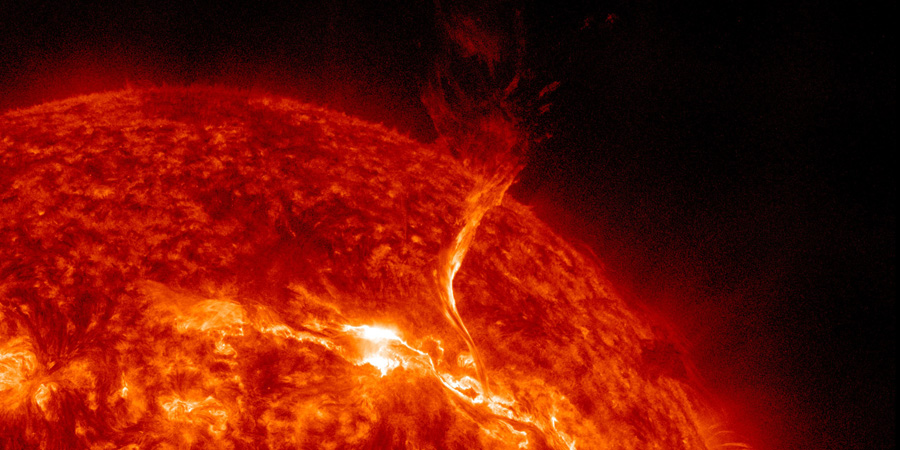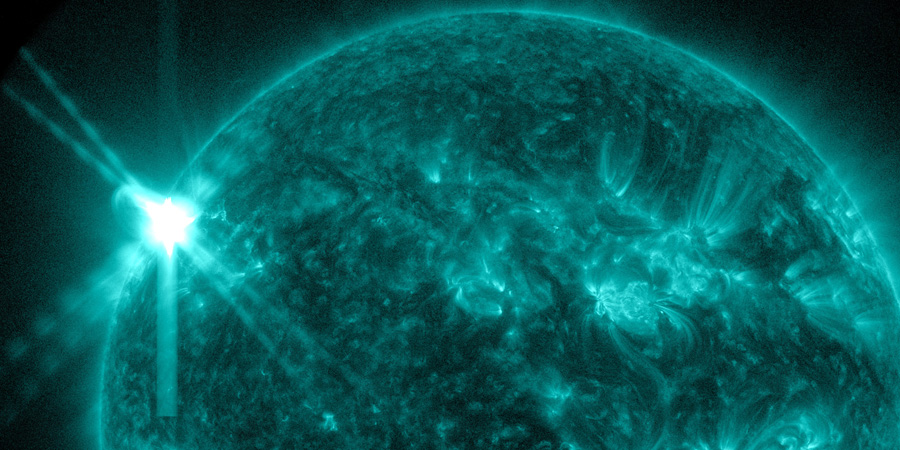Latest news updates Subscribe
Coronal mass ejection impact
niedziela, 23 kwietnia 2023 17:16 UTC
The coronal mass ejection from the M1.7 solar flare that took place two days ago has arrived at the DSCOVR satellite. We admit... this coronal mass ejection arrived earlier than we expected!
M1.7 solar flare, full halo CME
sobota, 22 kwietnia 2023 12:55 UTC
An M1.7 solar flare took place yesterday peaking at 18:12 UTC. The eruption was combined with what looks like a filament eruption around sunspot region 3283 which is located near the center of the earth-facing solar disk.
Coronal mass ejection arrival
wtorek, 18 kwietnia 2023 15:34 UTC
A shock in the solar wind was detected today around 13:20 UTC. This could very well be the arrival of a coronal mass ejection that was launched by a filament eruption on 15 April.
X1.2 solar flare
środa, 29 marca 2023 09:09 UTC
An impulsive solar flare peaking at the X1.2-class (R3-strong) took place today with the solar flare peaking at 02:33 UTC. Sunspot region 3256 (beta-gamma) which is close to the west limb is the source of this eruption. This region is currently located near the south-west solar limb.
Coronal hole faces Earth, G2 geomagnetic storm watch
środa, 22 marca 2023 17:18 UTC
The NOAA SWPC has issued a moderate G2 geomagnetic storm watch for this Friday (24 March) due to the anticipated arrival of a high speed solar wind stream coming from a southern hemisphere coronal hole.
G1 watch, far side CME, BROR rocket campaign
poniedziałek, 13 marca 2023 18:44 UTC
Quite the surprise this morning as proton levels at the near Earth environment suddenly started to rise this morning and even crossed the minor S1 solar radiation storm level. This was all the result of a major far side coronal mass ejection which you can see in the animation below which we posted on our Twitter account. Be sure to follow us and like the post! Magnetic field lines from the Parker Spiral managed to send some protons our way causing us to cross the minor S1 solar radiation storm level causing minor disturbances in HF radio communications at high latitudes. While impressive, the plasma cloud is of course aimed away from our planet and no further effects should be expected from it.
Coronal mass ejection arrival
niedziela, 26 lutego 2023 19:43 UTC
A coronal mass ejection has arrived at our planet. This is likely the arrival of the coronal mass ejection that was launched during a filament eruption in combination with an M3 solar flare two days ago.
M6.3 flare, double CME impact expected
niedziela, 26 lutego 2023 11:16 UTC
Sunspot region 3229 does it again this time with an M6.2 solar flare that peaked yesterday at 19:44 UTC. This long duration solar flare was again highly eruptive just like the M3.7 solar flare. A minor S1 solar radiation storm followed as a result of this eruption which has minor impacts on HF radio communications at high latitudes.
M3.7 solar flare, Earth-directed CME
sobota, 25 lutego 2023 10:40 UTC
A gorgeous filament eruption around sunspot region 3229 yesterday resulted in a M3.7 solar flare (R1-minor) that peaked at 20:30 UTC.
X2.2 solar flare with earth-directed CME
sobota, 18 lutego 2023 12:55 UTC
A major long duration X2.28 solar flare (R3-strong) took place yesterday and reached its peak at 20:17 UTC. This is the strongest solar flare of Solar Cycle 25 thus far and we can thank sunspot region 3229 for that. This sunspot region is currently close to the north-east limb and the solar flare was highly eruptive. Despite the region's location near the limb, we can not rule out a glancing blow from this plasma cloud.
Najnowsze wiadomości
Najnowsze wiadomości z forum
Wesprzyj SpaceWeatherLive.com!
Wielu ludzi odwiedza SpaceWeatherLive aby śledzić aktywność słoneczną lub sprawdzić czy jest szansa na zaobserwowanie zorzy polarnej. Niestety, większy ruch na stronie oznacza większe koszty utrzymania serwera. Dlatego, jeśli jesteś zadowolony ze strony SpaceWeatherLive, zachęcamy do wspierania nas finansowo. Dzięki temu będziemy mogli utrzymać naszą stronę.

Fakty na temat pogody kosmicznej
| Ostatnie rozbłyski klasy X | 2024/05/03 | X1.6 |
| Ostatnie rozbłyski klasy M | 2024/05/04 | M9.0 |
| Ostatnia burza geomagnetyczna | 2024/05/02 | Kp7- (G3) |
| Spotless days | |
|---|---|
| Ostatni dzień bez skazy | 2022/06/08 |
| Monthly mean Sunspot Number | |
|---|---|
| kwietnia 2024 | 136.5 +31.6 |
| Last 30 days | 151.9 +56.5 |
